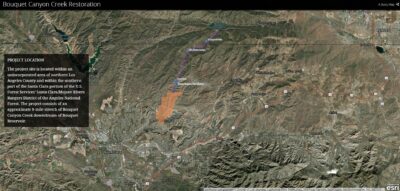
Taiwan Semiconductor Manufacturing Company’s expanding footprint in north Phoenix has triggered a cascade of development that extends far beyond its 1,129-acre campus. The chipmaker’s commitment, now totaling $165 billion after a March 2025 announcement added $100 billion to its previous $65 billion investment, has catalyzed the transformation of desert scrubland into what local officials call America’s next major technology corridor.
The most visible manifestation of this transformation is Halo Vista, a $7 billion mixed-use development by Mack Real Estate Group that will encircle TSMC’s facilities. The project encompasses 2,300 acres and includes 12 million square feet of industrial space dubbed “The Forge,” 3.5 million square feet dedicated to the Sonoran Oasis Research and Technology Park, and 500,000 square feet allocated for nearly 9,000 residential units. When fully developed, the project is projected to support 62,000 jobs.
“This is not just a science park, and not just a manufacturing district: It’s a community. It’s a city within a city,” said Richard Mack, CEO of Mack Real Estate Group, describing the development’s scope.
Phoenix officials have embraced the project with notable enthusiasm. Deputy Community and Economic Development Director Nathan Wright characterized the site’s market appeal: “We work with national site selectors weekly and some of the comments that we’ve received are, ‘Hey, this is the best shovel-ready site in the United States.'” The Phoenix City Council approved reimbursement for the developer’s public infrastructure costs in December 2024.
TSMC Arizona‘s gravitational pull on the semiconductor supply chain has proven substantial. Since the company’s Arizona announcement, 39 semiconductor-related companies have relocated to the Phoenix region, creating more than 7,700 jobs and generating over $37 billion in capital investment, according to Chris Camacho, president and CEO of the Greater Phoenix Economic Council.
Among these arrivals, Benchmark Electronics opened a Mesa facility in 2023 to manufacture equipment for semiconductor chip production. “To put it simply, we love being located near a lot of our customers,” explained Ryan Rounkle, vice president of Benchmark’s semiconductor capital equipment sector. Taiwanese semiconductor chemical supplier Sunlit Chemical opened a manufacturing facility in north Phoenix in October 2024, with plans for a 900,000-square-foot facility across 27 acres at full buildout.
The supply chain clustering effect documented in TSMC’s investment plans shows 14 of the company’s key suppliers establishing U.S. facilities, including providers of industrial gases, chemicals, and equipment components, building plants in Arizona and neighboring states. This concentration of related businesses amplifies the economic impact beyond TSMC’s direct employment.
TSMC’s phased expansion plans underscore the scale of transformation underway. The company’s first fab began producing 4-nanometer chips in Q4 2024, with capacity for 20,000 wafer starts per month. Construction continues on a second fab targeting 2-nanometer production by 2028, while a third fab is planned for completion by 2030. The recent $100 billion expansion announcement includes three additional fabs beyond these initial three, plus two advanced packaging facilities and a research and development center.
The workforce requirements for this expansion are substantial. TSMC Arizona currently employs more than 3,000 people, with projections calling for approximately 6,000 direct employees once the initial three fabs reach full operation. The broader construction effort will create 40,000 jobs over the next four years, according to company projections following the March 2025 expansion announcement.
Educational institutions have mobilized to meet these workforce demands. Arizona State University, with over 7,000 students currently studying microelectronics-related fields, has formed a partnership with TSMC focused on specialized classes, fellowships, and research opportunities. The collaboration gained additional significance with the January 2025 announcement that the U.S. Commerce Department and Natcast selected Arizona for the National Semiconductor Technology Center Prototyping and National Advanced Packaging Manufacturing Program facility at ASU Research Park in Tempe.
The broader impact on Arizona’s semiconductor sector predates but has accelerated with TSMC’s arrival. Since 2020, the state has attracted more than 40 semiconductor projects representing over $102 billion in capital investment and more than 15,700 direct jobs, according to the Arizona Commerce Authority. Greater Phoenix now hosts more than 75 semiconductor companies.
Market validation of Phoenix’s emergence as a semiconductor hub came with the announcement that Semicon West, a major microelectronics industry conference held in San Francisco for over 50 years, will relocate to Phoenix starting in 2025. “Greater Phoenix is home to more than 75 semiconductor companies, including Semi members EMD Electronics, Intel, and Taiwan Semiconductor Manufacturing Company,” noted Joe Stockunas, president of Semi Americas, explaining the relocation decision.
Intel’s simultaneous expansion in nearby Chandler, where it is building two new fabs at a cost of $20 billion, adds to the critical mass of advanced semiconductor manufacturing in the region. Combined with TSMC’s investment, the two companies have committed $108 billion to new advanced manufacturing facilities in Arizona, before TSMC’s additional $100 billion announcement.
The transformation of North Phoenix from desert to technology hub faces practical challenges, particularly regarding water resources in the drought-prone region. TSMC has committed to building an on-site water reclamation facility targeting 90% water recycling, addressing sustainability concerns while demonstrating the infrastructure investments required to support advanced manufacturing in the desert environment.
As construction cranes dot the horizon and semiconductor equipment arrives at expanding facilities, the scale of change in North Phoenix becomes increasingly tangible. The convergence of TSMC’s manufacturing operations, Halo Vista’s mixed-use development, and dozens of supplier facilities creates a semiconductor ecosystem that extends well beyond any single company’s boundaries. Whether this “Silicon Desert” can match the innovation and economic impact of established technology hubs remains to be determined, but the foundation being laid through billions in investment and thousands of jobs marks a clear transformation of Arizona’s economic identity.
DISCLAIMER: No part of the article was written by The Signal editorial staff.






